

Included on this site are the following areas of the villa: page 1: the Pecile and the Heliocaminus Bath page 2: areas of or near the Imperial Palace, including the Building with Doric Pillars page 3: Maritime Theater page 4: Philosophers' Chamber and Greek and Roman Libraries page 5: Piazza d'Oro page 6: Building with Fishpond and Large Baths page 7: Praetorium, Small Baths and Vestibule, Nymphaeum with three Exedra page 8: the Canopus page 9: the Serapeum and the Temple of Venus | ||
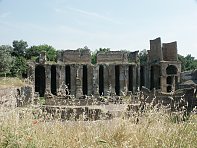
|
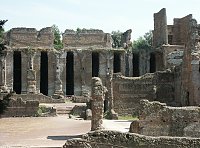
|
PraetoriumThis was a residential area, some think for the praetorian guards who protected the emperor, others postulate that craftsmen who worked on the decoration of the villa lived here. Latrines are nearby, which also lends credence to the idea that this area was residential. |

|
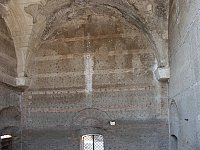
|
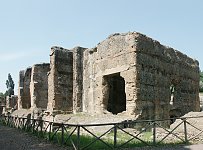
|
Area of Small Baths (above and below) |
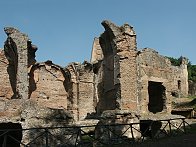
|
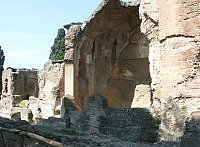
|
Vestibule connecting baths | ||

|
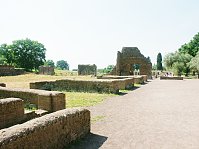
|
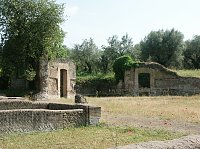
|
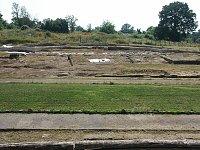
|
In front of the Exedra of AntinousRecent excavations have uncovered paved roads in this area as well as the foundations of a large exedra dedicated to Antinous with fragments of sculpture in an Egyptian style. Antinous, Hadrian's favorite, was associated with Osiris and drowned in the Nile. | |
The Nymphaeum with three ExedraSeveral columns with ornate capitals still remain here. This building is described as the entrance and communications hub to various parts of the imperial palace. A garden with fountains fronted this entrance. |
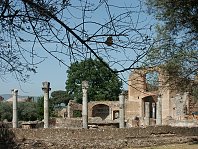
|
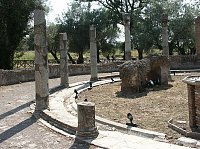
|
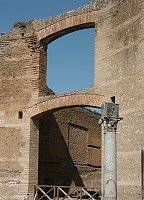
|
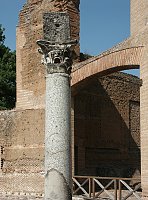
|
"The location of this complex, which overlooks the monumental fountain and central courtyard, has led researchers to postulate that this served as a Summer Trivialities [dining room], which was probably only closed by curtains and whose floor was paved with a rich display of marble" (Adembri 81). |
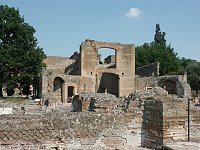
|
||
 Click here to return to index of art historical sites.
Click here to return to index of art historical sites.
 Click here to return to index of artists and architects.
Click here to return to index of artists and architects.
 Click here to return to chronological index.
Click here to return to chronological index.
 Click here to see the home page of Bluffton University.
Click here to see the home page of Bluffton University.
